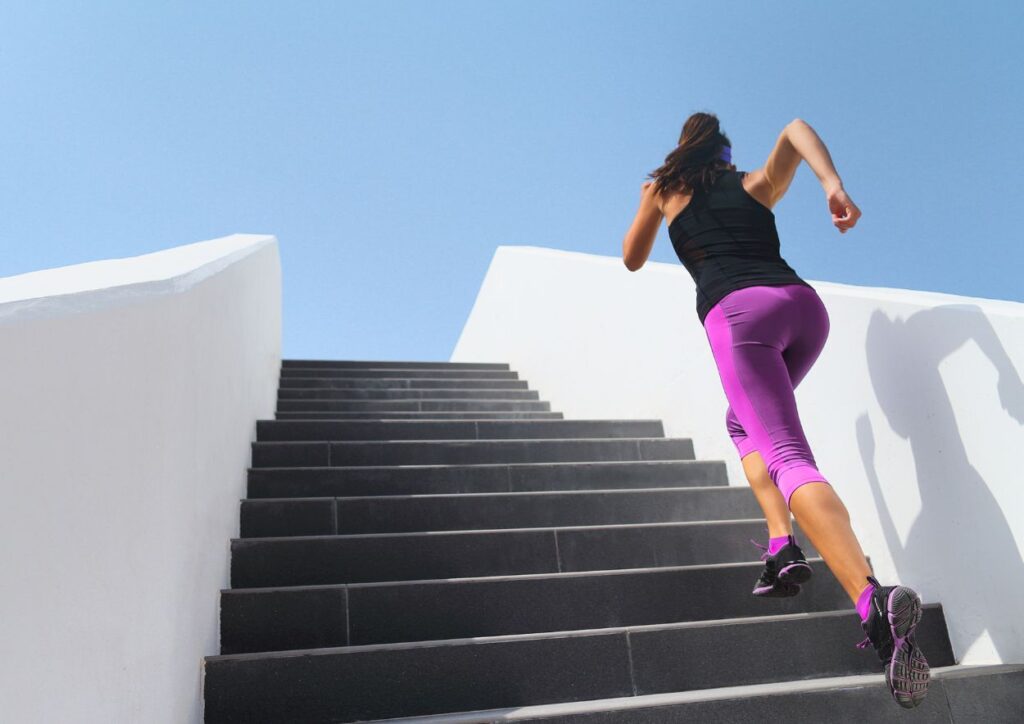Has it ever happened to you that you signed up for an easy trek and later found yourself being dragged through it by the trek leader? Wasn’t it supposed to be a so-called “easy trek”, then why did I get so exhausted? Maybe, the organizer tricked me into signing up for something difficult by mentioning it to be easy? Or maybe, it’s high time to accept the harsh truth – the trek was really easy and you need to work on your fitness.

I often get asked questions like whether a particular trek would be easy, whether they can complete it, does age matter, how much fitness is required, etc. Honestly, most of these questions come from people I haven’t even met before and it becomes very difficult for me to answer questions about one’s fitness in such circumstances. Hence, I thought of writing about it to help beginner trekkers get some clarity on the topic of basic fitness needed to start trekking and how to achieve the same.
Before you try to climb mountains in reality, you need to overcome the mountain in your head and the rest will just be a cakewalk.
What is an easy trek?
There is no universal definition of an ‘easy trek’. In general, treks are measured by two parameters – terrain and the endurance needed to finish it. A trek with an easy terrain would be the one with no difficult rock patches requiring usage of technical equipment like harnesses, ropes etc. By endurance, it would be easy if it can be completed (back and forth) within a day with an easy going pace. Now an easy going pace can again be different for different people. For a person who remains seated most part of the day, even climbing a few stairs would in itself seem like a small trek.
Let me further simplify it, any trek that can be completed within 3-4 hours by a person who is fit enough to climb a few floors a day and can walk a few kms a day, would fall under the ambit of easy treks. An easy trek doesn’t mean that you won’t feel tired at the end of it. It just means you won’t get, or rather shouldn’t get, completely exhausted by the time you reach just half of it.

Now, since we have established the fact that the so-called “easy trek” that we had signed up for was actually easy, let’s see how we can work on our fitness levels for a beginner level trek.
Walking
Here, I am not recommending walking as an exercise but more as a lifestyle. There is a subtle difference between the two. Our body needs to be trained to be on its feet.
Usually sitting down most of the time is our lifestyle (baseline) and then walk a little at the end of the day to count our steps and comfort ourselves that we have done a nice work-out. It is good for patients who are recovering from some health issues. However, if you want to trek then your baseline needs to be upgraded to walking.

Stair Climbing
If you want to climb the ‘Pahad’ then you need to train like a ‘Pahadi’. While we can’t have a mountain near our homes, the closest replica will be the stairs. This single exercise can train you in the best possible way to trek with vigour. A useful tip to start with stair climbing is to be slow. You need not rush between the stairs. Take pauses, catch your breath and then continue. The requirement here is to climb more stairs rather than climbing a few stairs quickly. You need to be careful that your form is correct with an upright body. Ensure you engage the right muscles, i.e. the hips and thigh muscles, instead of putting more pressure on the knees.

Stretching
Along with walking and stair climbing, flexibility of muscles too is very important to maintain proper range of motion in the joints and to avoid the risk of injuries. Hence, stretching should not be ignored. Following a simple routine of 15 minutes stretch in the morning and evening could do wonders to one’s flexibility. Major body parts to focus on while stretching could be thighs, hips, shoulders, back and neck. Other than providing flexibility, it can also relieve the stiffness and stress caused in muscles after a day-long desk job.

Protein
Any cardiovascular exercise will break down our muscles. In order to rebuild those, we need a sufficient supply of proteins and hence, a protein deficient diet will not be helpful in your training for the first trek. Now don’t rush to get some protein rich supplements, of course I don’t recommend those. Our day to day food items itself can provide us the necessary protein-rich options to include in our meals. For example, daal, paneer, nuts, etc. We need not make drastic changes in our diet, just increase the quantity of protein rich food items in our regular meals. A simple example can be eating more daal and less rice in your regular daal-rice meals.

Find below some useful links to help you better prepare for your first trek:
You might like to read about what you should not eat during treks – https://www.darkgreenadventures.com/post/what-you-should-not-eat-during-trek
Now that you are all geared up for your first trek, wanna check how the preparation worked for you? Check out the link for some upcoming treks nearby – https://wa.me/c/919326393025

